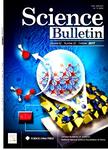版权所有:内蒙古大学图书馆 技术提供:维普资讯• 智图
内蒙古自治区呼和浩特市赛罕区大学西街235号 邮编: 010021

作者机构:Department of Atmospheric and Environmental Sciences University at Albany State University of New York College of Ocean and Meteorology Guangdong Ocean University Department of Atmospheric and Oceanic Sciences School of Physics Peking University College of Global Change and Earth System Science Beijing Normal University Guangdong Province Key Laboratory for Climate Change and Natural Disaster Studies and School of Atmospheric Sciences Sun Yat-sen University Alfred-Wegener-Institut Helmholtz Zentrum für Polar-und Meeresforschung University of Bremen Institute of Environmental Physics Lamont-Doherty Earth Observatory Columbia University Earth Institute National Institute of Polar Research Polar Research and Forecasting Division National Marine Environmental Forecasting Center State Key Laboratory of Numerical Modeling for Atmospheric Sciences and Geophysical Fluid Dynamics Institute of Atmospheric Physics Chinese Academy of Sciences
出 版 物:《Science Bulletin》 (科学通报(英文版))
年 卷 期:2019年第64卷第1期
页 面:63-72页
核心收录:
基 金:supported by the National Key R&D Program of China (2018YFA0605901) the NOAA Climate Program Office (NA15OAR4310163) the National Natural Science Foundation of China (41676185) and the Key Research Program of Frontier Sciences of Chinese Academy of Sciences (QYZDY-SSW-DQC021)
主 题:Arctic sea ice prediction Remote sensing Data assimilation
摘 要:Rapid declines in Arctic sea ice have captured attention and pose significant challenges to a variety of stakeholders. There is a rising demand for Arctic sea ice prediction at daily to seasonal time scales, which is partly a sea ice initial condition problem. Thus, a multivariate data assimilation that integrates sea ice observations to generate realistic and skillful model initialization is needed to improve predictive skill of Arctic sea ice. Sea ice data assimilation is a relatively new research area. In this review paper, we focus on two challenges for implementing multivariate data assimilation systems for sea ice forecast. First, to address the challenge of limited spatiotemporal coverage and large uncertainties of observations, we discuss sea ice parameters derived from satellite remote sensing that(1) have been utilized for improved model initialization, including concentration, thickness and drift, and(2) are currently under development with the potential for enhancing the predictability of Arctic sea ice, including melt ponds and sea ice leads. Second, to strive to generate the ‘‘best estimate of sea ice initial conditions by combining model simulations/forecasts and observations, we review capabilities and limitations of different data assimilation techniques that have been developed and used to assimilate observed sea ice parameters in dynamical models.